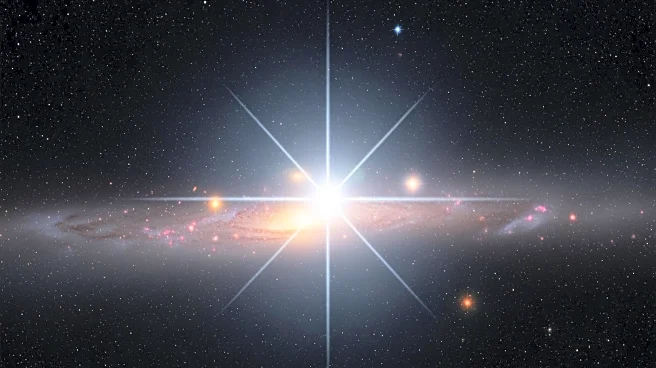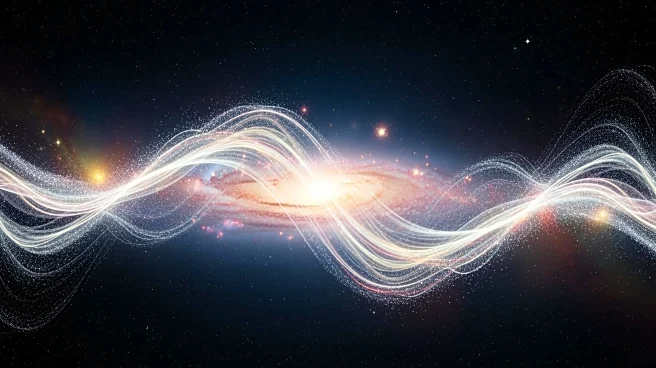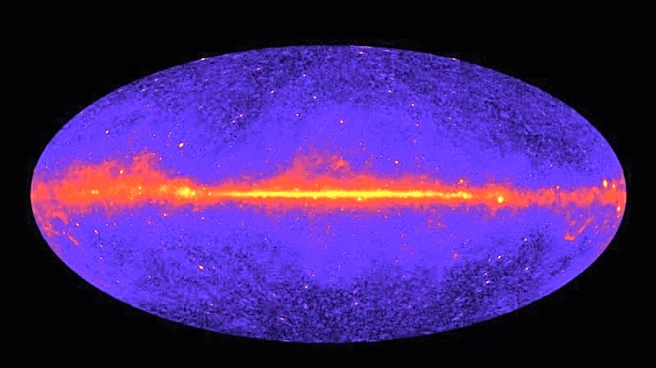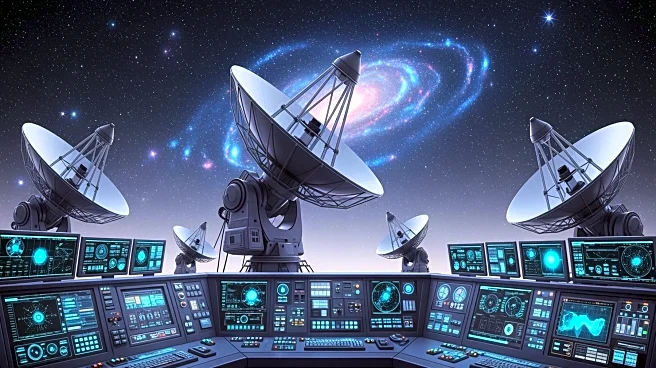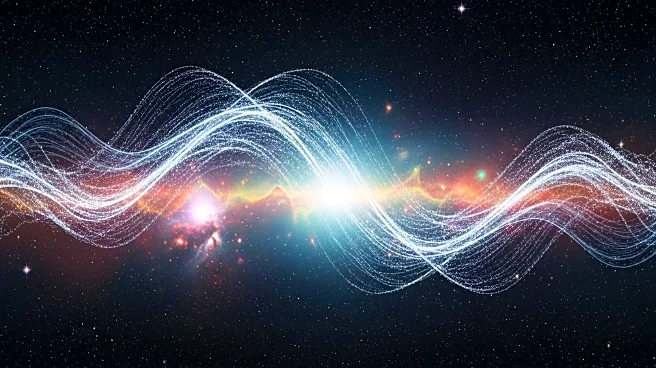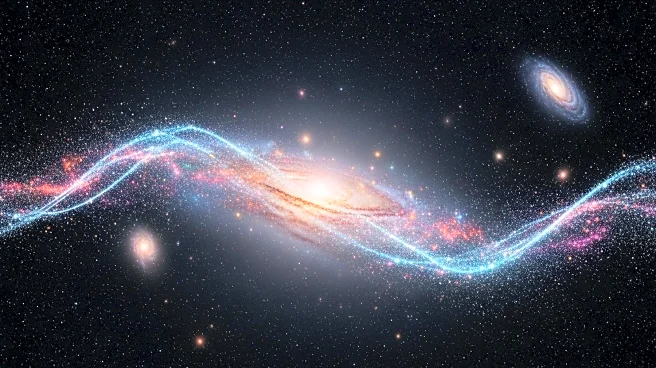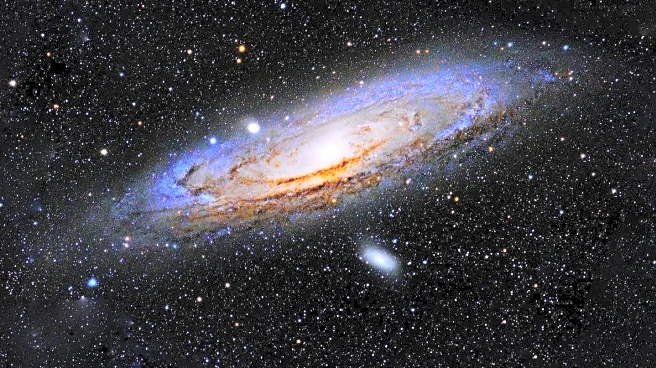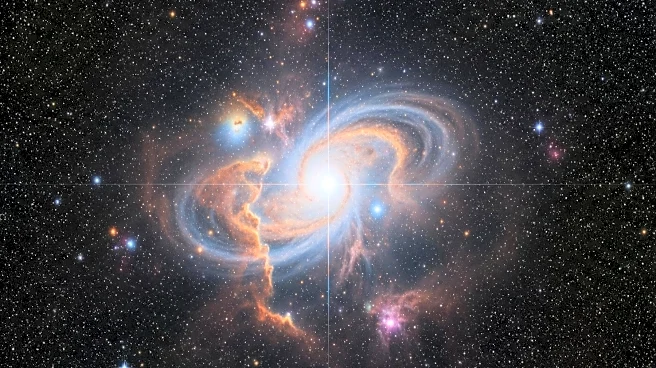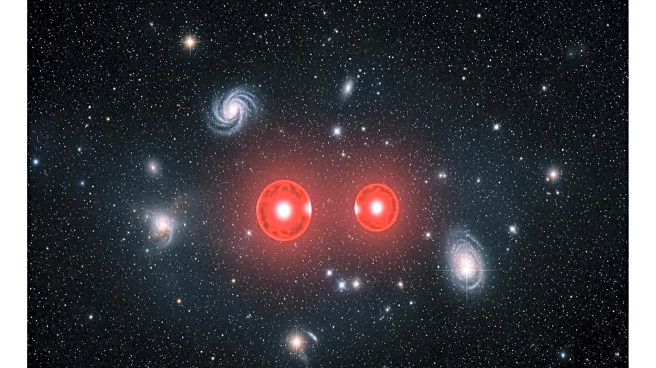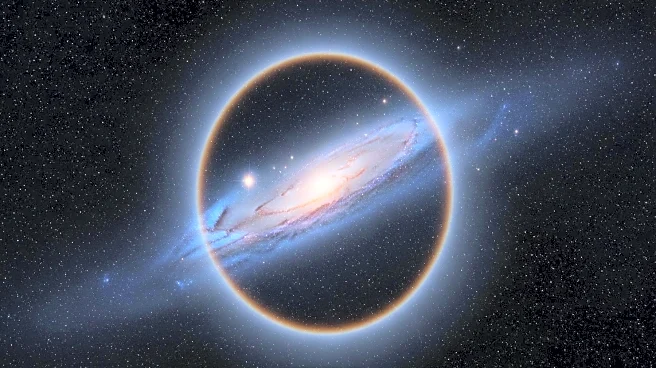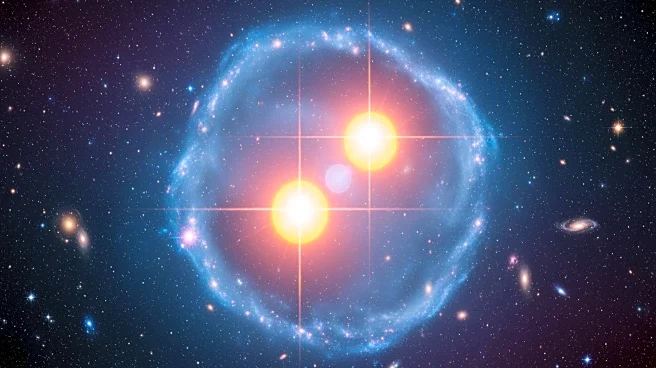What's Happening?
Astronomers have discovered a 'pristine' star near the edge of the Milky Way, which could be a direct descendant of the universe's first stars. Named SDSS J0715-7334, this red giant is around 30 times
more massive than the sun and has the lowest metallicity of any star ever seen. The star's low concentration of heavy elements suggests it may have originated from the Large Magellanic Cloud before falling into the Milky Way. This discovery provides a window into the early stages of stellar evolution and challenges existing theories about star formation, as the star's metallicity falls below the 'fine structure cooling threshold,' which is thought to be necessary for star formation.
Why It's Important?
The discovery of SDSS J0715-7334 is significant because it offers insights into the formation of the universe's first stars, which have never been directly observed. The star's low metallicity suggests it is a direct descendant of a first-generation star formed from primordial hydrogen clouds after the Big Bang. This challenges existing theories about star formation, as the star's metallicity falls below the threshold thought necessary for star formation. Understanding how such metal-poor stars form could provide valuable information about the early universe and the processes that led to the formation of galaxies.
What's Next?
Researchers will continue to study SDSS J0715-7334 to understand how metal-poor stars can form despite their low metallicity. The study team believes cosmic dust may provide additional cooling to the gas, allowing star formation to occur. Further research could help refine models of star formation and provide insights into the conditions of the early universe.
Beyond the Headlines
The discovery of SDSS J0715-7334 highlights the importance of studying stars with low metallicity to understand the universe's early history. It challenges existing theories about star formation and suggests that cosmic dust may play a crucial role in cooling gas clouds to enable star formation. This research underscores the complexity of stellar evolution and the need for continued exploration of the universe's oldest stars.
